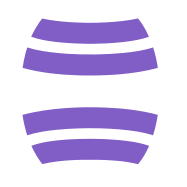Web3 protocols have revolutionized the way we interact with the internet. These protocols enable decentralized applications (dApps) to be built on the blockchain, providing a more secure, private, and transparent environment for users. In this blog post series, we will explore different web3 protocols, each with their unique features and use cases. In this article, we will dive into the world of Ethereum, the first and most well-known web3 protocol.
Ethereum: Empowering Decentralized Applications
Ethereum, created by Vitalik Buterin in 2015, is a decentralized, open-source blockchain platform that enables the development of smart contracts and dApps. It introduced the concept of programmable blockchains, giving developers the ability to build applications on top of the Ethereum blockchain.
How does Ethereum work?
Ethereum operates on a decentralized network of computers called nodes. These nodes work together to maintain a distributed ledger that records all transactions and smart contracts executed on the network. Ethereum’s native cryptocurrency, Ether (ETH), serves as a fuel for executing smart contracts and incentivizing miners who secure the network.
Ethereum’s core feature is its ability to execute smart contracts. Smart contracts are self-executing agreements with predefined rules written in code. They automatically execute when certain conditions are met, eliminating the need for intermediaries. This feature enables a wide range of applications, including decentralized finance (DeFi), non-fungible tokens (NFTs), and more.
Use cases for Ethereum
Ethereum’s versatility has led to a multitude of use cases across various industries. Here are a few examples:
-
Decentralized Finance (DeFi): Ethereum has become the backbone of the DeFi ecosystem, enabling the creation of decentralized lending platforms, decentralized exchanges, stablecoins, and more.
-
Non-Fungible Tokens (NFTs): Ethereum is widely used for the creation and trading of NFTs, which represent unique digital assets such as art, music, virtual real estate, and collectibles.
-
Supply Chain Management: Ethereum’s transparency and immutability make it ideal for tracking and verifying supply chain transactions, ensuring authenticity and reducing fraud.
-
Gaming: Ethereum enables the development of decentralized gaming applications with features like player-owned assets, true ownership of in-game items, and provably fair gameplay.
Advantages and challenges of Ethereum
Ethereum has several advantages that have contributed to its dominance in the web3 space:
- Network Effects: Ethereum is the largest and most active blockchain platform, with a significant developer community and user base.
- Smart Contract Support: Ethereum’s ability to execute Turing-complete smart contracts makes it highly flexible for various use cases.
- Interoperability: Ethereum’s compatibility with other blockchain networks through protocols like Polkadot and Cosmos allows for seamless transfer of assets and data.
However, Ethereum also faces some challenges:
- Scalability: As Ethereum grows, its current infrastructure faces scalability issues, resulting in high transaction fees and slower processing times.
- Environmental Impact: Ethereum’s consensus mechanism, Proof of Work (PoW), requires substantial energy consumption, leading to concerns about its environmental sustainability.
- Competing Networks: Other web3 protocols, such as Solana and Binance Smart Chain, have emerged to address Ethereum’s scalability and cost issues, posing potential competition.
Conclusion
Ethereum has been a trailblazer in the web3 movement, empowering developers to build decentralized applications and revolutionize various industries. With its smart contract functionality and growing ecosystem, Ethereum continues to pave the way for a more transparent and inclusive internet. However, challenges like scalability and environmental impact need to be addressed for Ethereum to maintain its position as the leading web3 protocol. In the next blog post, we will explore another web3 protocol and see how it differs from Ethereum. Stay tuned!
Please note that the information in this blog post is based on the current state of Ethereum and may be subject to changes and innovations in the future.





